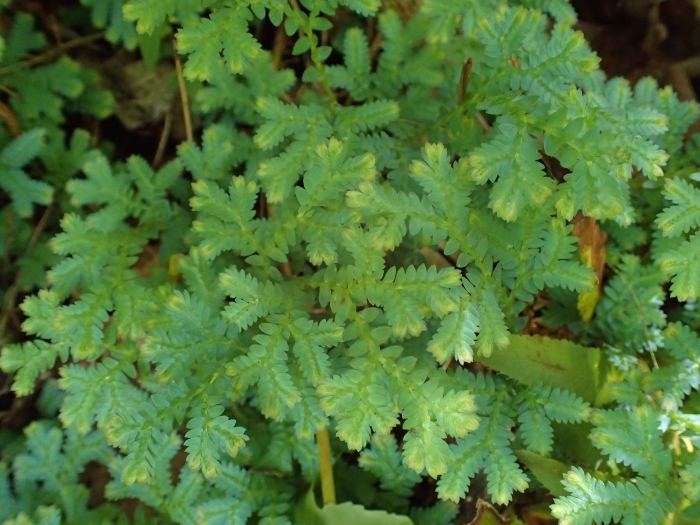Meadow Spikemoss
(Selaginella apoda)
Meadow Spikemoss (Selaginella apoda)
/
/

© Evan M. Raskin
CC BY 4.0
Image By:
© Evan M. Raskin
Recorded By:
Copyright:
CC BY 4.0
Copyright Notice:
Photo by: © Evan M. Raskin | License Type: CC BY 4.0 | License URL: http://creativecommons.org/licenses/by/4.0/ | Uploader: eraskin | Publisher: iNaturalist |

























Estimated Native Range
Summary
Selaginella apoda, commonly known as meadow spikemoss, is a perennial lycophyte native to moist habitats such as the damp soils of swamps, wet meadows, and stream banks in the eastern and southeastern United States, extending into parts of northeastern Mexico. This low-growing plant typically forms dense, green mats with its small, scale-like leaves, and it produces spores in cone-like structures called strobili. The foliage may turn bronze in the fall, adding seasonal interest.
Meadow spikemoss is valued for its ability to thrive in heavily shaded, moist environments, making it an excellent ground cover for water gardens, shaded rock gardens, and woodland settings. It is also used in studies on environmental adaptability due to its resilience in wet conditions. In cultivation, it prefers consistently moist, humus-rich soil and does best in part shade to full shade. While it is not drought-tolerant, it requires little maintenance once established. Gardeners should be aware that in ideal conditions, it can spread vigorously.CC BY-SA 4.0
Meadow spikemoss is valued for its ability to thrive in heavily shaded, moist environments, making it an excellent ground cover for water gardens, shaded rock gardens, and woodland settings. It is also used in studies on environmental adaptability due to its resilience in wet conditions. In cultivation, it prefers consistently moist, humus-rich soil and does best in part shade to full shade. While it is not drought-tolerant, it requires little maintenance once established. Gardeners should be aware that in ideal conditions, it can spread vigorously.CC BY-SA 4.0
Plant Description
- Plant Type: Fern
- Height: 0.1-0.25 feet
- Width: 0.6-1.5 feet
- Growth Rate: Moderate
- Flower Color: N/A
- Flowering Season: Non-Flowering
- Leaf Retention: Evergreen
Growth Requirements
- Sun: Full Sun, Part Shade
- Water: Medium
- Drainage: Medium
Common Uses
Low Maintenance, Water Garden
Natural Habitat
native to moist habitats such as the damp soils of swamps, wet meadows, and stream banks in the eastern and southeastern United States, extending into parts of northeastern Mexico
Other Names
Common Names: Meadow Spikemoss, Lycopodium, Basket Spike Moss, Spike Moss
Scientific Names: , Selaginella apoda, Diplostachyum apodum, Lycopodioides apodum, Lycopodium albidulum, Lycopodium apodon, Lycopodium apodum, Lycopodium apodum var. pilifera, Lycopodium apus, Selaginella albidula
GBIF Accepted Name: